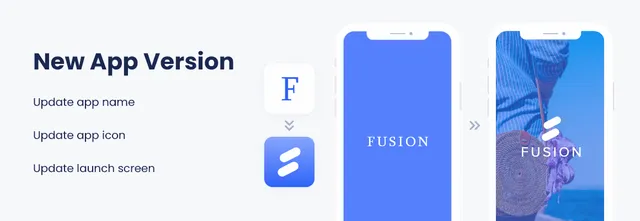Updates are an important part of a successful app.

We all are used to getting pesky notifications to update our apps. There are many reasons why app companies should regularly roll out updates.
It is a good way to maintain the ASO optimality of your app listing. Furthermore, you can also use updates as opportunities to bring new changes to the app.
Updating content and design are not generally the primary goal of a general app update. Companies mostly rollout app updates to remove bugs or introduce new features.
Since it is very easy now to create an app using an app creator online, the focus has shifted from development to management. Updating content and design is a key part of app management.
This brings us to the crux of the article - how often should you update your app content and design? This piece covers some app update strategies you can follow to streamline content and design changes.
#1 - Routine-based updates
The easiest way to approach content and design updates is following a time table.
Let’s assume you have a blogging app. Establishing a regular time table to push out blog posts to your app is a great way to keep updating your content.
Creating a timetable naturally requires a deep understanding of user behaviour and psyche. A news app needs to have an intensive schedule of content updates.
People expect news apps to be accurate, fast, and updated. You cannot have a weekly schedule if all your users expect five to six news articles from your app.
Design updates can similarly be broken down into a regular schedule. It is however wise to avoid a routine-based update strategy for app design. While your users expect regular content updates, they don’t exactly demand constant change in app design.
#2 - Event-oriented updates
From a festival to any other type of event, your users will have certain content expectations.
We all are used to seeing app designs and content pieces inspired by an upcoming festival or event. This is a natural response to the general public interest in an event about to take place.
App companies are right to update their app design and content based around an event-based strategy.
Following this strategy naturally poses an interesting question - what is an event?
We generally count popular festivals and holidays as an event. However, you don’t have to tie your update strategy down to this definition alone.
Your app niche may become popular and trendy at a given point in time. A good example is the increased popularity of finance-related apps in the recent weeks because of popular news stories like Wall Street Bets and Robinhood.
Using these moments to enhance your app engagement and popularity is a no-brainer.
#3 - User feedback updates
App users often deliver their own feedback and design and content. It is normal for app companies to modify their app based on incoming feedback.
The feedback doesn’t always have to be direct. Your app users will often vote for the best content on your app with their actions. If a certain type of content consistently performs well, you can modify your content strategy accordingly.
You can further experiment with different content update frequencies to find the best strategy for your app. The same can be applied to app design as well.
#4 - Market-based updates
Let’s say your immediate competitor starts pushing more app content every day. This ends up enhancing the app engagement of your competitor and pushes your app down the pecking order.
You will naturally react by starting a more intense content cycle of your own. You might again do something similar when your competitor benefits from making a simple change to app design.
Reacting to competitors will always be a part of your app journey. There is no way you can survive by turning yourself off from the tactics your competitors are employing.
Market-based updates refer to the changes you make based on the actions of your competitors. It is a good strategy when you are trying to keep up with your competitors and get more engagement than others.
In conclusion
Starting an app is not a herculean task anymore. You can easily make a mobile app with the help of a free Android & iOS app maker.
The main challenge is managing apps effectively. This piece lists four different ways you can manage the update frequency of your app design and content. You can choose any combination of these tactics to establish a coherent content and design update strategy.